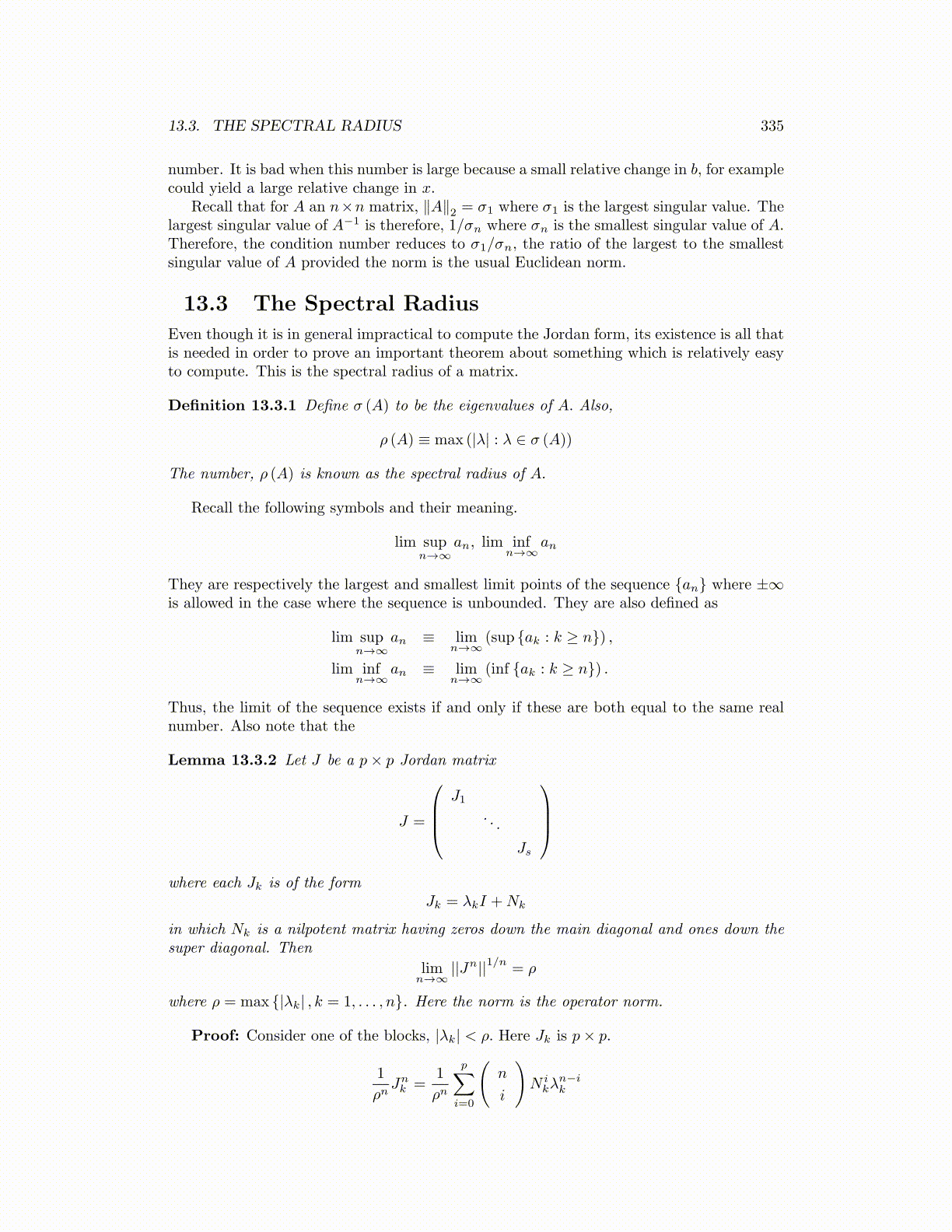
13.3. THE SPECTRAL RADIUS 335
number. It is bad when this number is large because a small relative change in b, for examplecould yield a large relative change in x.
Recall that for A an n×n matrix, ∥A∥2 = σ1 where σ1 is the largest singular value. Thelargest singular value of A−1 is therefore, 1/σn where σn is the smallest singular value of A.Therefore, the condition number reduces to σ1/σn, the ratio of the largest to the smallestsingular value of A provided the norm is the usual Euclidean norm.
13.3 The Spectral Radius
Even though it is in general impractical to compute the Jordan form, its existence is all thatis needed in order to prove an important theorem about something which is relatively easyto compute. This is the spectral radius of a matrix.
Definition 13.3.1 Define σ (A) to be the eigenvalues of A. Also,
ρ (A) ≡ max (|λ| : λ ∈ σ (A))
The number, ρ (A) is known as the spectral radius of A.
Recall the following symbols and their meaning.
lim supn→∞
an, lim infn→∞
an
They are respectively the largest and smallest limit points of the sequence {an} where ±∞is allowed in the case where the sequence is unbounded. They are also defined as
lim supn→∞
an ≡ limn→∞
(sup {ak : k ≥ n}) ,
lim infn→∞
an ≡ limn→∞
(inf {ak : k ≥ n}) .
Thus, the limit of the sequence exists if and only if these are both equal to the same realnumber. Also note that the
Lemma 13.3.2 Let J be a p× p Jordan matrix
J =
J1
. . .
Js
where each Jk is of the form
Jk = λkI +Nk
in which Nk is a nilpotent matrix having zeros down the main diagonal and ones down thesuper diagonal. Then
limn→∞
||Jn||1/n = ρ
where ρ = max {|λk| , k = 1, . . . , n}. Here the norm is the operator norm.
Proof: Consider one of the blocks, |λk| < ρ. Here Jk is p× p.
1
ρnJnk =
1
ρn
p∑i=0
(n
i
)N i
kλn−ik